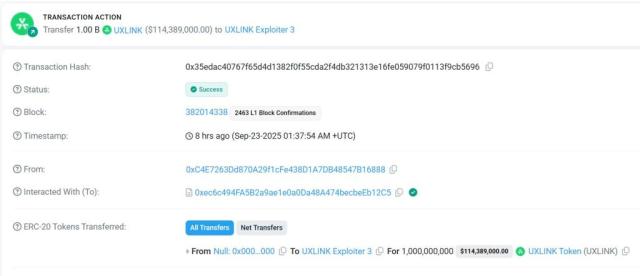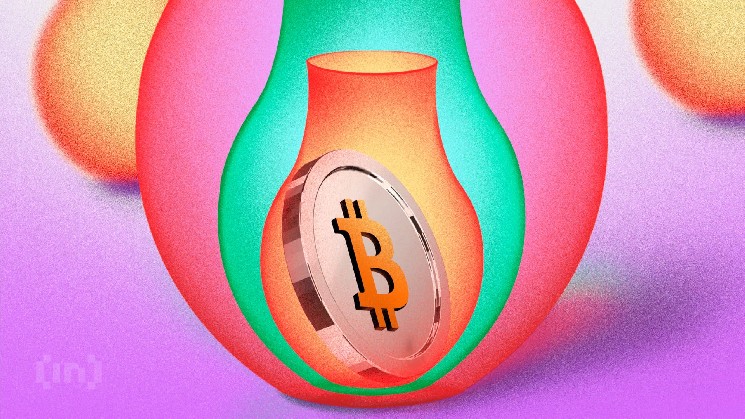Author: Unchained
Compiled by: Vernacular Blockchain

This episode of "Unchained" discusses Base Camp's breaking news: Base's announcement to explore issuing a token to achieve decentralization has caused a stir in the industry. Host Laura Shin and guests Ryan and Ico Beast delve into the significance, potential designs, and impact of this move. Base's decision to "explore" rather than directly launch a token may be related to the unclear regulatory environment (such as the Clarity Act) and narrative control.
The panelists believe that token distribution will likely be primarily based on Coinbase's 20%-40% stake, treasury, and community allocations. The rollout will likely be a combination of airdrops and ICOs, with precautions against Sybil attacks. Token usage may be similar to that of Ethereum, involving sequencer revenue, DeFi liquidity, and potential governance. Base insists on building on Ethereum, demonstrating synergy with the Ethereum ecosystem, while also announcing integration with Solana, reflecting its response to competition. The program also explored the positioning of Base, Solana, and other blockchains in the on-chain competition, predicting that the future crypto market will be centered around token generation and transaction volume, with competition driving industry consolidation and innovation.
The following is the interview content:
Laura Shin: Welcome to Unchained, your resource for all things cryptocurrency. I'm your host, Laura Shin. Today we're discussing the big news from Base Camp: Base is exploring issuing tokens, a move that's sending shockwaves through the ecosystem. Our guests are Ryan, most recently at Coinbase Ventures and previously at Coin Fund, and Ico Beast, a narrative merchant at Proof of Play. Welcome, Ryan.
Ryan: Hey, Laura, thanks for having me.
Laura Shin: Jesse Pollock announced that Base is exploring issuing tokens to achieve decentralization, despite previously stating no interest in doing so. What was your initial reaction to this news?
Ryan: This is a very exciting development. As Base continues to develop, it's achieved a significant amount of growth without a native token. This demonstrates the fundamental growth Base is attracting in terms of users and developers. Clearly, the Base team now feels they have a critical mass of developers and on-chain liquidity for the next phase of growth, and in order to further accelerate development and compete at the highest level, they are exploring issuing a token to achieve this. So, this feels like a natural evolution, but for a centralized and publicly traded company like Coinbase, it's quite shocking to hear.
Laura Shin: Why do you think Base chose to announce that it was exploring issuing a token instead of launching it directly?
Ryan: They likely have a lot of unanswered questions themselves. Issuing a token is no small undertaking, and there are many details to work through, such as distribution, usage, and how to discuss it publicly. This is due to two factors: First, now that users and developers know there will be a Base token, it will likely trigger a surge in activity on Base. Many users will pay for transactions, which will attract more development teams to deploy on Base. Furthermore, they just released the new Bayat TDA and opened a waiting list, which I imagine will only grow. Therefore, this announcement will certainly reignite interest in Base, especially given the challenges of competing for market share across blockchains. Second, they likely still have a lot of complex details to iron out. Another important factor is the ongoing US Congressional process regarding regulation and legislation related to certain token classifications. This will undoubtedly be a crucial input, and they may be awaiting the final outcome before finalizing the details of the specific proposal.
Laura Shin: Jesse emphasized Base's commitment to building on Ethereum to benefit from the global, connected economy. What are your thoughts on this decision given the competition between blockchains?
Ryan: This shows a strategic alignment. Ethereum is now on its own path and is becoming an institutional asset and blockchain. If you ask anyone on Wall Street about the three things they think of in cryptocurrency, they'll probably say Bitcoin, stablecoins, and Ethereum. Base is built on the EVM, and that was an early decision. As Ethereum becomes institutionalized on Wall Street as a settlement chain for various assets, I almost see Base as a forward-looking, institutional- and retail-focused fork of Ethereum, particularly in the US market. The benefit is that they can grow alongside Ethereum. Ethereum continues to gain critical mass among developers, and Base is clearly contributing to that. It's more about aligning with something that's already working and collaborating to make the whole bigger.
Laura Shin: How do you think the BaseToken distribution will be designed? What should it ideally look like?
Ryan: A typical token project's distribution is usually divided into three parts: the team, early backers and the treasury, and the community. If we apply this analogy to the Base token, it's a one-to-one match. I expect a significant portion will likely be held by Coinbase, recorded on their balance sheet, somewhere between 20% and 40%. Perhaps an additional 20% will be held in a separate treasury, managed jointly by the Base team, Coinbase, and other community participants. The remainder will be distributed to the broader community, whether through a public sale, airdrop, or some other ongoing distribution method. This will build sufficient ownership, particularly on Coinbase's side, to incentivize them to continue providing value and traffic on Base.
Laura Shin: How do you think Base will launch its token? Will it be an airdrop, an ICO, or some other method? What will the token be used for?
Ryan: It's probably a combination of approaches. There are three aspects to consider. First, how will tokens be distributed to developers? This could be measured by transaction volume or the amount of gas consumed by applications on Base. They might run statistics to identify projects that joined Base early and contributed to the ecosystem and give them some distribution. Second, from a user perspective, their goal might be to make TDA and the Base app the consumer frontend for Base, serving as the primary consumer and user channel to develop and own relationships with consumers. It makes perfect sense to run a points campaign through that interface. Finally, there's the public sale. A lot of people have been comparing Coinbase to Robinhood. Robinhood has a product that allows users to invest in IPOs earlier. I think a similar situation is starting to emerge with crypto projects, such as Legion and Echo, where the ICO-style crowdfunding model is returning. They might leverage a similar product, through Coinbase or elsewhere, to conduct the largest ICO sale of Base tokens ever. This would be their response to a Robinhood-style product, but in a crypto-native and Coinbase-native way. They want to make a splash; this would obviously be the largest or most interesting fundraising event, and people would want to participate.
Laura Shin: (To Ico Beast) Welcome, Ico Beast. What is your initial reaction to Basecoin exploring token issuance?
Ico Beast: My initial reaction was, "I knew it," and many people probably feel the same way. I've posted about this before on X, as I'm very active on Base. At the time, I said, "I bet we'll have wallets ready for this airdrop." Many people countered that there would never be an airdrop because they own shares and don't understand that Base and Coinbase aren't the same entity. But I was excited to hear the news and thought it was very interesting. It's curious that they left a lot of wiggle room, claiming they were only "exploring" the idea of a token. Everyone wants to read into that, but it gives them a lot of leeway to postpone it, or even abandon it entirely if they feel the need. The announcement was cleverly worded, providing flexibility for future operations.
Laura Shin: How do you think the distribution of BaseToken should be designed? Do you agree with Ryan that Coinbase may hold 20% to 40% of the tokens?Ico Beast: This is a difficult question, as airdrops are a hot topic. There's been a lot of discussion lately about the purpose and design of airdrops. Ideally, a large portion would be allocated to users, but we also know that distributing too many tokens to users can lead to poor price action because everyone wants to sell. If it follows the philosophy of Base, as we've observed over the past year, it will likely be more inclined to incentivize developers. So, those who actually build projects on Base, use Base apps, or bring a large number of users to the Base ecosystem, like major protocols like Virtual and Drum, will likely receive a significant allocation. As for Coinbase's holdings, I think it's entirely reasonable. The point of a network token is to benefit from sequencer revenue or other network effects. If that's the case, it's reasonable to expect them to retain a significant portion of the tokens to receive a large portion of the sequencer revenue. Furthermore, if they allocate a significant portion for themselves, I think that's a good signal for the token price, as you wouldn't expect Coinbase to immediately crash the price after taking a large chunk of tokens. Therefore, I'd feel more comfortable with them holding a significant portion of the supply than distributing 40% to the community, as the latter has a predictable outcome.
Laura Shin: What do you think is the best way for Base to launch its token? What will be the long-term use of the token?
Ico Beast: I even wish they hadn't announced it in advance and instead gone ahead and listed the token directly, the way Arbitrum did. But at the same time, I think the most successful airdrops will be those that actively filter out Sybil attacks, either through voluntary reporting or through a bounty system. Everyone has multiple wallets on these networks right now, like Privy Wallet and other ad-hoc wallets set up for various applications. One approach is for people to link all their wallets and operate as a single entity; another is to set up bounties for catching Sybil clusters, like LayerZero does, to incentivize people to hunt down cheaters. Tokens need to be widely distributed, especially to strengthen network effects or achieve true decentralization. Sybil attacks ultimately defeat this purpose. Therefore, the reality of users operating multiple wallets on the network must be handled skillfully.
Laura Shin: Jesse mentioned that Base is committed to building on Ethereum. What are your thoughts on this, especially in the context of Ethereum competing with other blockchains?
Ico Beast: I hope so. All L2s should be synergistic and ultimately create value for Ethereum. Whether this will be the case in practice in the long term is unclear, but I believe Base's core philosophy is currently aligned with Ethereum. This also brings up the question of tokens. If it ultimately becomes a gas token or some alternative, or even a validator-style token that requires staking, this does raise some questions. For example, sequencer revenue is often intended to ultimately pay for the "rent" of running on Ethereum, and whether these aspects align is unclear. But it's good to hear they're confirming their plans to do so. This is the risk Ethereum is taking by choosing the Rollup scaling path, and hopefully L2 won't end up being a separate entity. Hopefully, that's the outcome; at least that's their stated intention at this stage.
Laura Shin: Base also announced an integration with Solana, which is now live on testnet. What do you think this means for the Ethereum-Solana competition?
Ico Beast: That depends on the actual user experience. We're all aware of the complexity of liquidity fragmentation and its dispersal across multiple chains and layers. Eventually, someone will provide a highly usable, seamless unified liquidity layer, so that users don't even know which chain they're on when they're interacting on it; it's all abstracted away from the end user. We're not there yet, and it's hard to predict when, but we haven't seen many cross-chain EVM-to-SVM use cases. Typically, you need to use protocols like Synapse and Relay to move funds across chains; there's no real native integration between the two. So it's going to be interesting to see how the user experience plays out. It's hard to predict the second- and third-order effects of the user experience until you experience it. If the experience is seamless, it will be interesting to see which chain the value ultimately flows to. This will depend on which chain is outputting more native tokens, which is the more interesting area, assuming the experience is seamless.
Ryan: My takeaway is that this is simply Base acknowledging that Solana is its biggest competitor. If you talk to the biggest projects in the space, especially those on Base, they admit that Solana is the only other chain they would consider building on. This is a big step for many projects, as these are two completely different tech stacks with high costs, but they're willing to consider it because it's a positive ROI decision, which speaks to Solana's strength. On one hand, there's DeFi liquidity, and on the other hand, there's consumers. Solana is probably doing a better job right now in terms of consumer and user culture. Look at what's happening on Pump: anything that's more relevant to everyday people, Gen Z, if they're using crypto, is likely on Solana. In contrast, while Base has users, it's clearly more skewed towards DeFi and liquidity. The best part about Base is all the DeFi liquidity projects, which makes sense given that Coinbase is a financial services company. Therefore, popular core products on Base will naturally flow from that, whether it's Bitcoin lending on Morpho or DEX trading on Aerodrome. What Base currently lacks compared to Solana is a strong user and consumer culture. With this integration, they're essentially saying that projects considering deploying on Solana now have the option of deploying on Base to gain access to more liquidity or growth from an EVM perspective. The reverse is also true: if there are projects on Base considering moving to Solana, they don't necessarily need to leave Base entirely and can now consider Solana as a second option. The high-level conclusion is that Base is nervous about Solana, their biggest competitor, and this is their way of attracting developers to access both ecosystems simultaneously.
Laura Shin: As on-chain competition intensifies with players like Coinbase through Base, Robinhood, and Solana, how do you think this competition will evolve?
Ico Beast: If I knew the answer, I'd be perfectly positioned for the next five years in crypto. I don't know the answer, so I'm staying exposed to all of them. The entire crypto market will only continue to expand. My belief is that over the next three years or so, there won't be a Solana company or an Ethereum company, or even a crypto company. They'll all be companies, selectively using crypto as needed. To me, that means staying exposed to all players and letting the market evolve naturally, because staying exposed is the key to success in this situation.
Ryan: Ultimately, crypto is financial technology, and its core product is tokens. Therefore, the winner will be determined by the chain that generates the most tokens, and those tokens have the most trading volume and liquidity. Solana's approach is memecoins. Base's approach is the liquidity brought by Coinbase. Hyperliquid's approach is providing a dedicated on-chain marketplace for the broader crypto market. These are the two most important directions. The question then becomes what role you want to play in each of these directions. Solana's approach is obviously to increase the number of tokens and hope to generate more trading volume over time. Base's approach is to bring tokens with high trading volume, such as Coinbase-wrapped Bitcoin or USDC, but also to think about how to create an economy that issues a large number of tokens on-chain. This is why they are experimenting with projects like Creator Coins. If you are a blockchain, you are in the tokenization business, and these are two possible ways to win.
Link to this article: https://www.hellobtc.com/kp/du/09/6040.html
Source: https://www.youtube.com/watch?v=MLpfCYZ1jVs






